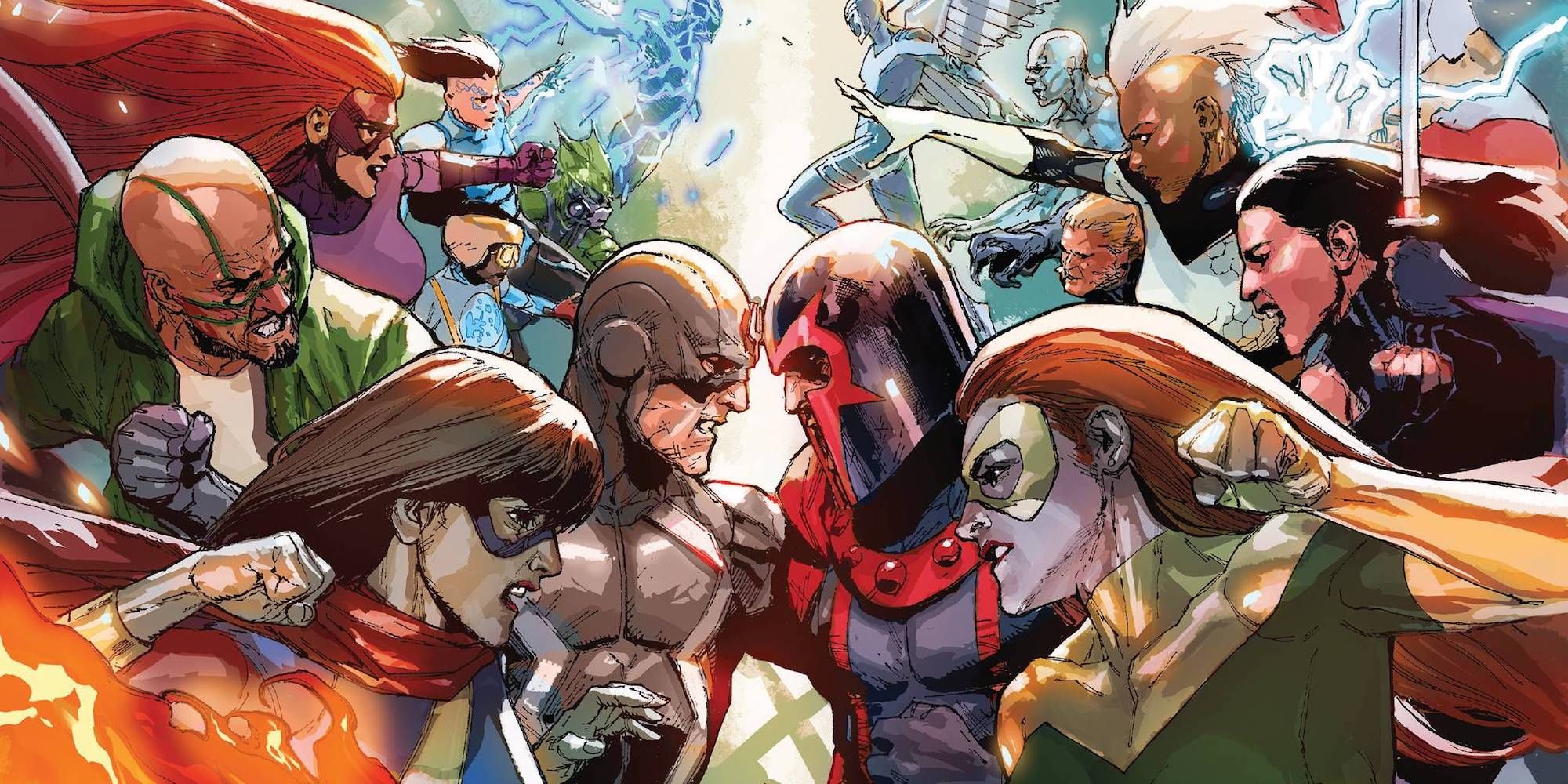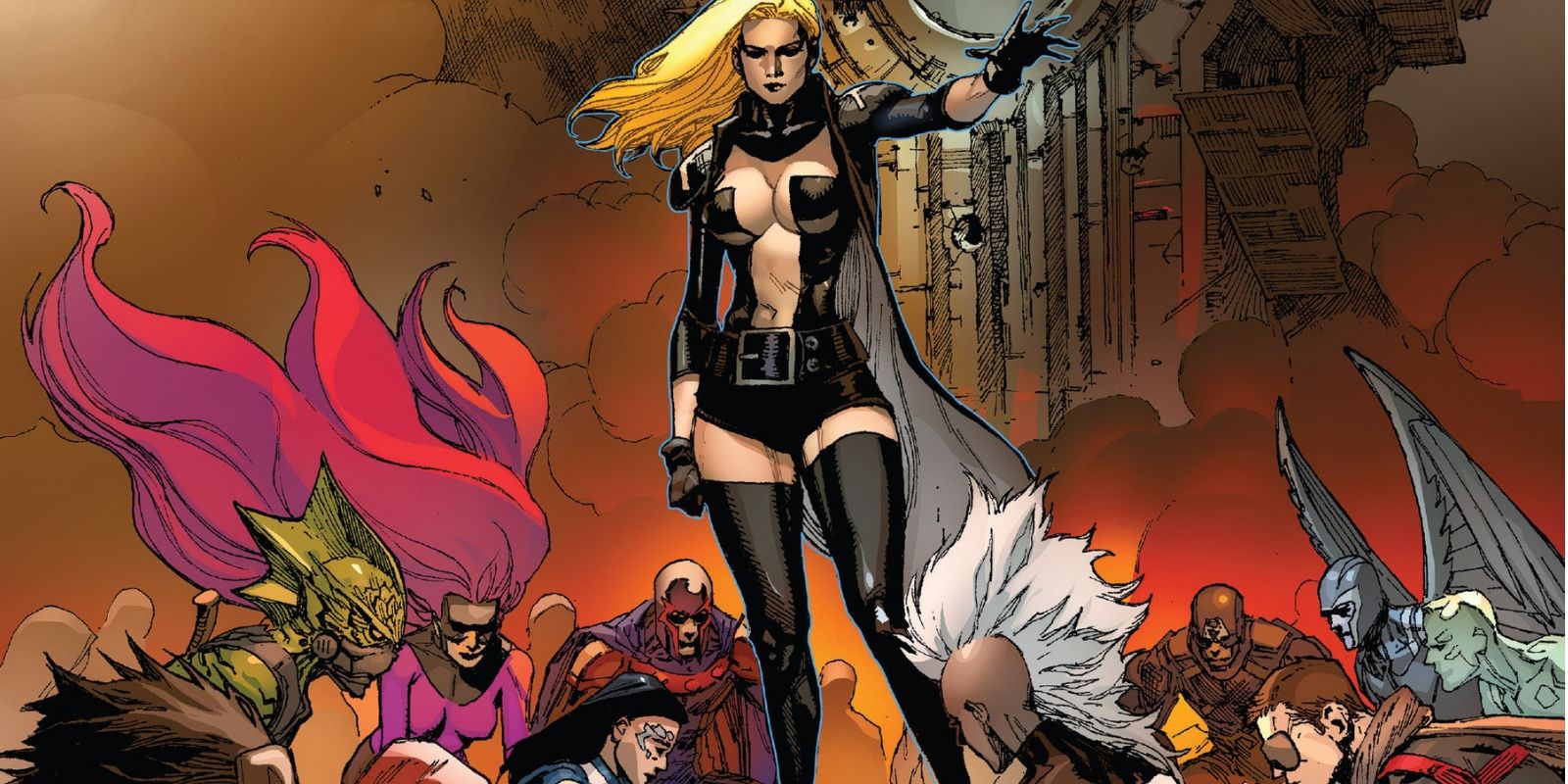Warning! Spoilers for Planet-Size X-Men #1 ahead!
Planet-Size X-Men #1 shows Marvel's mutants at their grandest. The X-Men have announced their intention to become a galactic super-power, with the mutant inhabitants of Krakoa already taking their own super-powers to new heights. All of this seems extremely reminiscent of another team - the Inhumans - that Marvel pushed very hard - and subsequently failed to capture the attention of both comic readers and general audiences.
The Inhumans first appeared in Fantastic Four #45 in December 1965. The group are descendants of Kree experimentation on humans millions of years ago, and possess a diverse set of superhuman abilities after being exposed to Terrigen Mists. The Inhumans have a Royal Family, consisting of the mute Black Bolt, whose voice is powerful enough to level cities, his Queen Medusa, who can manipulate her steel-strong hair, and several others. Though the team and its members made frequent appearances in Marvel properties over the years, their most popular appearance was doubtlessly a mini-series written by Paul Jenkins and Jae Lee in 1998, which explores the the team's struggle against threats to their home city of Attilan from neighboring human nations as well as from within. During the War of Kings storyline, the Inhumans become a galactic super-power much like the X-Men by forging an alliance with the Kree.
However, in 2013, Marvel made major changes to the Inhuman franchise, after a Terrigen bomb exposed hundreds of regular people to the Terrigen mists, granting them superpowers. The storyline also culminates in the destruction of Attilan, and sees the Inhumans now striving to live peacefully among humans, much like the X-Men. Many speculated this push was due to 20th Century Fox's ownership of the X-Men film rights, resulting in a supposed "Cold War" between Fox and Marvel, who apparently emphasized the Inhumans over the X-Men. Whatever the reasons, Marvel's Inhumans push extended far beyond the comics. The Terrigen Mists and NuHumans appeared prominently on ABC's Agents of SHIELD, leading up to the Inhumans' own disastrous television series. Similarly, the Inhumans never gained much traction with comic book readers, and a major status quo shift would return the Inhumans to their familiar roots.
Interestingly enough, the events of Planet Size X-Men by Gerry Duggan and Pepe Larraz seem to be positioning the X-Men in a very Inhuman-like position. Krakoa's own society bears a more than passing resemblance to Atillan, as both see super-powered diversity valued over human normalcy. While hindsight is twenty-twenty, it's very possible Marvel might have had similar success with the Inhumans had the group been played to their strengths as a space-faring empire of superhuman beings struggling to find their place in the galaxy. Instead, the Inhumans tried to play X-Men's strengths, but lacked both the emotional connection and sense of history to connect with fans. Even with a major multimedia push, the move failed spectacularly. On the other hand, the Dawn of X reboot has largely succeeded despite pushing the X-Men into controversial territory. While Dawn of X did benefit from an extensive reboot with several spin-offs, the reboot ultimately used the extensive history of the X-Men to its advantage instead of largely ignoring it.
Ultimately, the failure of the Inhumans push shows the limitations of corporate synergy when compared to fan-grown comic book passion. How the implications of Planet-Size X-Men will be received in the long run remains to be seen, but the X-Men reboot's success so far is undisputed. This is largely due to the fact that the Dawn of X managed to play to the strength of its core characters instead of against it.


